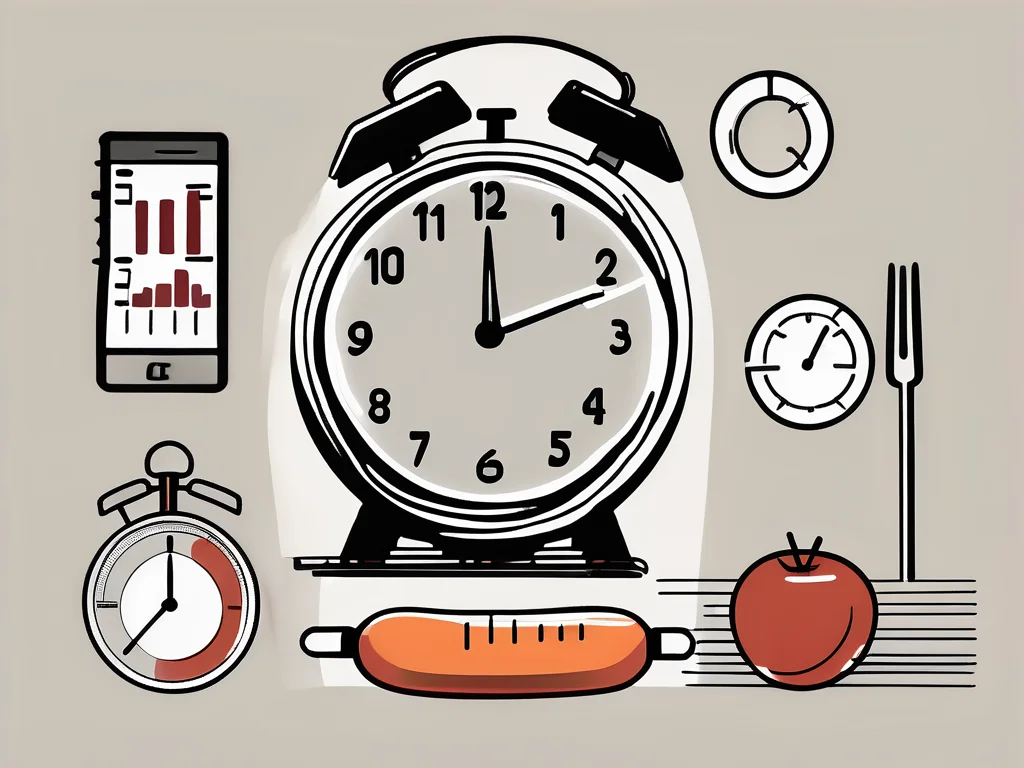Monitoring postprandial blood sugar is a critical aspect of managing diabetes and maintaining overall metabolic health. By tracking blood glucose levels after meals, individuals can gain insights into how their body responds to food, lifestyle, and medications. This blog explores the importance of postprandial blood sugar monitoring, its benefits, and practical strategies for effective glucose control, incorporating LSI keywords such as blood glucose monitoring, diabetes management, post-meal glucose, insulin sensitivity, and glycemic control.
What Is Postprandial Blood Sugar?
Postprandial blood sugar refers to the glucose levels in the bloodstream after eating. It reflects how the body processes carbohydrates, proteins, and fats from meals. For individuals with diabetes, monitoring these levels is essential to understand how specific foods, portion sizes, and other factors affect blood sugar.
After eating, carbohydrates are broken down into glucose, which enters the bloodstream. The pancreas releases insulin to transport glucose into cells for energy or storage. Typically, postprandial blood sugar peaks 1-2 hours after a meal and gradually declines. Factors like the glycemic index of foods, meal composition, and insulin sensitivity influence these levels.
Why it matters: Regular monitoring helps identify patterns in glucose spikes, enabling better diabetes management and informed lifestyle adjustments.
Why Monitor Post-Meal Glucose?
Monitoring postprandial blood sugar is vital for preventing health complications and optimizing blood glucose control. Here’s why it’s important:
Health Risks of High Postprandial Blood Sugar
Consistently elevated post-meal glucose levels can lead to hyperglycemia, increasing the risk of type 2 diabetes, cardiovascular diseases, and organ damage. Symptoms of hyperglycemia include thirst, frequent urination, fatigue, and blurred vision. Tracking postprandial glucose helps detect and prevent prolonged high blood sugar, reducing the risk of complications.
Benefits of Regular Monitoring
- Identifies dietary impacts: Monitoring reveals how specific foods affect blood sugar, enabling smarter food choices.
- Detects insulin resistance: Early identification of insulin resistance allows for timely interventions to prevent diabetes progression.
- Guides treatment: Data from post-meal glucose tests informs medication adjustments and lifestyle changes for better glycemic control.
- Prevents complications: Consistent monitoring helps maintain stable blood sugar, reducing the risk of long-term health issues.
What Factors Influence Postprandial Blood Sugar?
Several factors affect post-meal glucose levels, from diet to lifestyle choices. Understanding these can help individuals manage their blood sugar effectively.
Role of Nutrients in Blood Sugar
The type and amount of nutrients in a meal significantly impact postprandial glucose:
- Carbohydrates: Simple carbs (e.g., sugary snacks) cause rapid glucose spikes, while complex carbs (e.g., whole grains) lead to slower, steadier increases.
- Proteins and fats: These nutrients slow glucose absorption, helping stabilize blood sugar levels.
- Fiber: High-fiber foods like vegetables and legumes reduce glucose spikes by slowing digestion.
Tip: Opt for balanced meals with complex carbs, lean proteins, and healthy fats to maintain stable post-meal glucose.
Impact of Stress and Sleep
Stress and poor sleep disrupt hormonal balance, affecting blood sugar control:
- Stress: Cortisol and adrenaline, released during stress, increase blood sugar by stimulating glucose production in the liver.
- Sleep: Inadequate sleep impairs insulin sensitivity and disrupts appetite-regulating hormones, leading to higher postprandial glucose.
Solution: Practice stress-reducing techniques like meditation and aim for 7-8 hours of quality sleep to support blood glucose monitoring.
How to Manage Postprandial Blood Sugar Through Diet
A well-planned diet is key to maintaining healthy post-meal glucose levels. Here’s how to optimize your eating habits:
Foods for Stable Blood Sugar
Incorporate these foods to promote glycemic control:
- Whole grains: Quinoa, brown rice, and oats are high in fiber, slowing glucose absorption.
- Lean proteins: Chicken, fish, tofu, and legumes provide steady energy without spiking blood sugar.
- Healthy fats: Avocados, nuts, and olive oil support balanced glucose levels.
- Fruits and vegetables: Whole fruits and colorful veggies like broccoli and bell peppers offer fiber, vitamins, and antioxidants.
Pro tip: Avoid sugary beverages and processed foods, which cause rapid glucose spikes.
Meal Planning Tips
- Distribute carbs evenly: Spread carbohydrate intake across meals to prevent large glucose spikes.
- Choose low-glycemic foods: Foods like lentils and berries have a minimal impact on blood sugar.
- Control portions: Smaller, balanced meals help regulate postprandial glucose.
- Practice mindful eating: Savor meals slowly to improve digestion and awareness of hunger cues.
Example: A balanced meal might include grilled chicken, quinoa, steamed broccoli, and a side of berries.
Role of Exercise in Postprandial Glucose Control
Physical activity is a powerful tool for managing post-meal blood sugar. Here’s how it helps:
How Exercise Impacts Blood Sugar
Exercise improves insulin sensitivity, allowing muscles to absorb glucose more efficiently. This reduces postprandial glucose spikes and supports long-term blood sugar control. Regular activity also aids weight management, a key factor in preventing insulin resistance and type 2 diabetes.
Best Exercises for Glucose Control
- Aerobic exercise: Walking, jogging, or cycling promotes glucose utilization.
- Resistance training: Weightlifting enhances insulin sensitivity and muscle glucose uptake.
- Yoga: Reduces stress and improves hormonal balance, supporting blood sugar regulation.
Recommendation: Aim for at least 150 minutes of moderate aerobic exercise or 75 minutes of vigorous activity weekly, combined with strength training twice a week.
Timing and Frequency of Meals
The timing and frequency of meals play a significant role in diabetes management:
- Smaller, frequent meals: Eating 5-6 small meals throughout the day prevents large glucose spikes and maintains steady energy levels.
- Consistent timing: Regular meal schedules stabilize blood sugar and improve metabolism.
- Mindful eating: Paying attention to portion sizes and eating slowly enhances digestion and glucose control.
Tip: Avoid skipping meals, as this can lead to overeating and blood sugar fluctuations.
How to Monitor Postprandial Blood Sugar at Home
Home monitoring of postprandial blood sugar is simple and effective with a glucometer:
- When to test: Measure blood sugar 1-2 hours after a meal to capture peak glucose levels.
- Track patterns: Log results to identify trends and adjust diet, exercise, or medications.
- Use technology: Apps or devices can store and analyze glucose readings for better insights.
Key benefit: Home monitoring empowers individuals to make informed decisions about their blood glucose monitoring routine.
Interpreting Postprandial Blood Sugar Results
Understanding your results is crucial for effective diabetes management:
- Target ranges: Consult your healthcare provider for personalized postprandial glucose targets (typically 140-180 mg/dL for people with diabetes).
- Combine with other metrics: Use post-meal readings alongside fasting blood sugar and HbA1c for a complete picture of glucose control.
- Look for trends: Consistently high or low readings may indicate the need for lifestyle or medication changes.
Action step: Share your results with your doctor to refine your diabetes management plan.
When to Consult a Healthcare Professional
Seek medical advice if:
- Postprandial blood sugar levels are consistently above or below target ranges.
- You experience symptoms of hyperglycemia (e.g., thirst, fatigue) or hypoglycemia (e.g., shakiness, confusion).
- Medication adjustments or new symptoms arise.
Why it’s important: Professional guidance ensures optimal glycemic control and reduces the risk of complications.
Conclusion
Monitoring postprandial blood sugar is a cornerstone of effective diabetes management. By understanding how meals, exercise, stress, and sleep affect glucose levels, individuals can make informed choices to maintain healthy blood sugar. Incorporating a balanced diet, regular physical activity, and consistent monitoring empowers people to prevent complications and lead healthier lives. Start tracking your post-meal glucose today to take control of your metabolic health.



